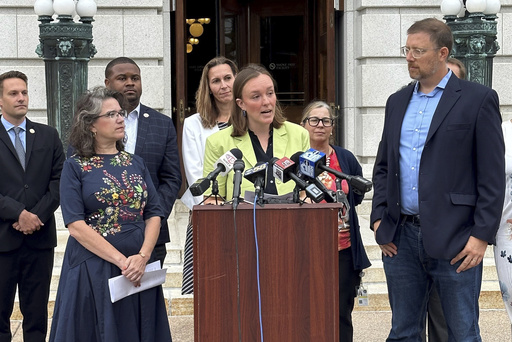MADISON, Wis. (AP) — For the first time in more than a decade, Democrats in key battleground state Wisconsin have a chance at wresting some legislative control from Republicans thanks to Gov. Tony Evers’ new district maps.
Republicans will likely retain their majority in the Senate in November’s elections. But redrawn districts coupled with retirements have left almost two-thirds of the Assembly’s seats open this election cycle, giving Democrats their best shot at taking control of that chamber in a generation.
“It’s been too partisan for too long,” Senate Minority Leader Dianne Hesselbein said. “I know I’m sick of it and the people of Wisconsin are, too.”
Wisconsin has been a key swing state in the last two presidential races. Donald Trump became the first Republican since Ronald Reagan to win the state in 2016. Joe Biden took the state by just 21,000 votes in 2020 and the state figures to be a pivotal one again this fall.
Beneath all the presidential drama, Republicans have dominated state politics for 14 years thanks largely to gerrymandered legislative districts.
Republicans took control of the Senate and Assembly in 2011. Democrats used recall elections to win a majority in the Senate for six months in 2012, but otherwise the GOP has run both houses since then. They’ve reshaped Wisconsin’s political profile, neutering public employee unions, legalizing concealed weapons, scaling back diversity initiatives, tightening voting rules and controlling the state budget with an iron fist.
The power balance began to shift last year, though, when liberal justices took a majority of the state Supreme Court seats for the first time in 15 years. By the end of the year the court invalidated the GOP-drawn legislative districts. Republican lawmakers in February adopted new maps that Evers drew rather than allowing the liberal court to craft districts that might be even worse for them.
Republicans finished the 2023-24 session with a 64-35 advantage in the Assembly. All 99 seats are up this fall. Retirements and Evers’ redistricting changes will leave almost 60 seats open in November. Democrats have more than 120 candidates running, the most since 2011.
Democrats are focusing on areas Biden won or narrowly lost in 2020, said Assembly Minority Leader Greta Neubauer. Candidates are talking to voters about abortion, the economy and concerns about Trump. She declined to estimate how much Democrats will spend on Assembly campaigns but predicted the more competitive races will cost over $1 million.
“We can’t afford to wait any longer for a Democratic majority in the Assembly,” Neubauer said. “It’s going to be a program of a scale we have not seen in a long time, if ever.”
Assembly Speaker Robin Vos brushed off Neubauer’s remarks. “They say this every two years and it never works out for them,” Vos said.
Republicans have better candidates and voters don’t want Wisconsin to become a “crazy liberal state” like Minnesota, Illinois or Michigan, Vos said. And rising inflation under Biden will drag down Democrats, he said.
The GOP held 22 of 33 Senate seats at the end of this past session, with one vacancy. To flip the chamber, Democrats would have to win 13 of 16 seats up for election this fall.
Hesselbein acknowledged Democrats won’t capture the majority but said their time will come in 2026. Democrats have already pledged to spend $7 million on television ads in five key Senate districts.
Big political spending is nothing new in swing state Wisconsin, but usually the money goes to high-profile races, not legislative candidates that few voters outside their districts recognize.
The state Democratic Party raised $16.4 million last year, more than four times what the state Republican Party mustered. The $7 million Senate ad buy alone amounts to nearly half of the $17 million Democrats spent on all legislative races in the 2022 election cycle.
Senate Majority Leader Devin LeMahieu said Evers was clearly looking to oust GOP incumbents when he crafted his maps. But he, too, predicted that inflation will work for Republicans.
“Every time someone goes to the grocery store,” LeMahieu said, “they’re reminded how expensive things are.”
This website uses cookies so that we can provide you with the best user experience possible. Cookie information is stored in your browser and performs functions such as recognising you when you return to our website and helping our team to understand which sections of the website you find most interesting and useful.
